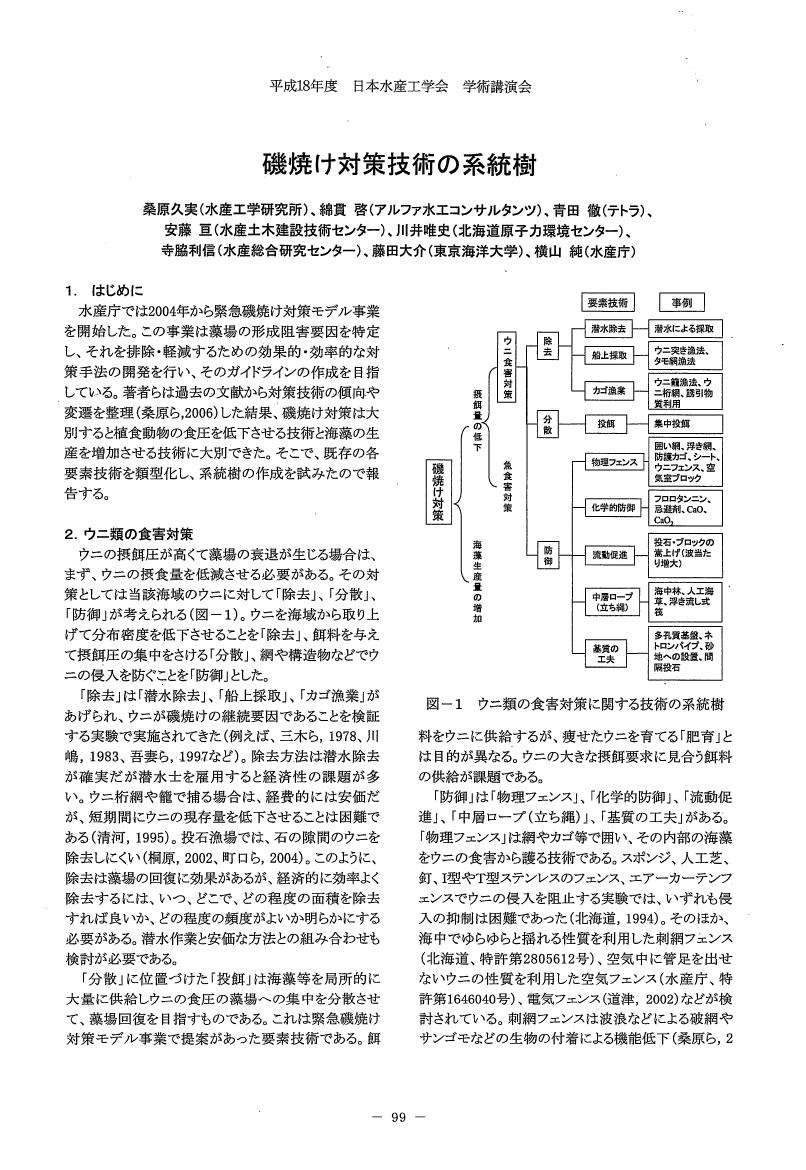1 0 0 0 OA 磯焼け対策技術の系統樹
1 0 0 0 OA 文献から見た磯焼け対策研究の歩み
- 著者
- 桑原 久実 綿貫 啓 青田 徹 安藤 亘 川井 唯史 寺脇 利信 横山 純 藤田 大介
- 出版者
- 日本水産工学会
- 雑誌
- 日本水産工学会誌 (ISSN:09167617)
- 巻号頁・発行日
- vol.43, no.1, pp.81-87, 2006-07-15 (Released:2017-09-01)
- 参考文献数
- 21
- 被引用文献数
- 3
To detect the trend on seaweed restoration techniques on barren grounds in Japan, domestic literature (> 1,000) published since 1970 were surveyed. The literature contains local survey (18%), experiments and detailed observations (23%), recovery trials (43%) and reviews (16%). The literature increased chronologically with a temporal maximum in 1980-85. Among the local areas, literature was particularly abundant in western coasts of Hokkaido and Pacific coasts of middle Honshu (from the Kii Channel to Cape Inubo). The target seaweed bed types were mostly kelp and Sargassum forests and the dominant causative agents of these bed reductions were intensive grazing by sea urchins and herbivorous fishes. The literature analysis revealed that 'removal' of sea urchins and 'defense' of seaweeds were unreasonably preceded by employing stones or concrete blocks and transplanting seaweeds. Grazing by herbivorous fishes is a recent problem in southern Japan; the literature abruptly increases after 2000. These may represent some of the reasons why barren ground recovery projects were unsuccessful.
